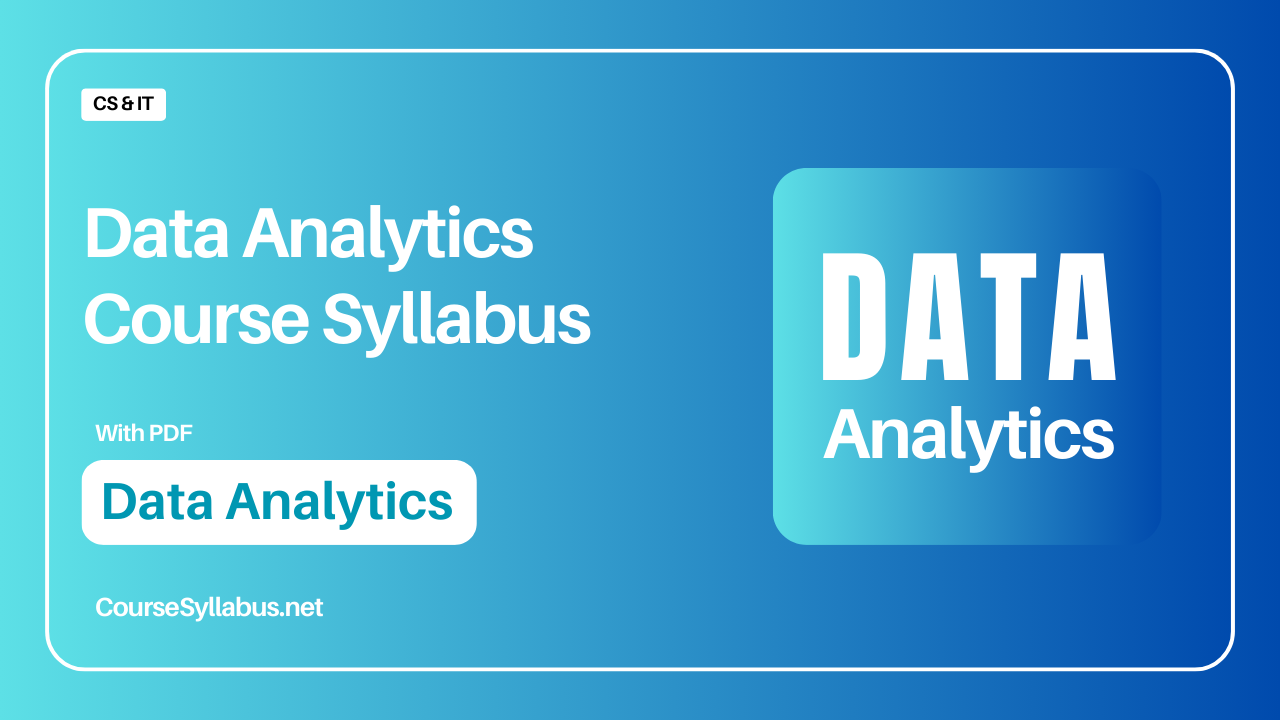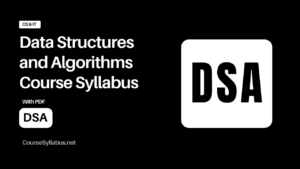Data Analytics is the process of extracting insights from raw data to drive informed decision-making and achieve business goals. By applying statistical analysis, machine learning, and visualization techniques, organizations can uncover patterns, trends, and opportunities hidden within large datasets. Data Analytics plays a crucial role in various industries, enabling businesses to optimize operations, mitigate risks, and capitalize on opportunities for growth and innovation.
Data Analytics Course Syllabus
Module 1: Introduction to Data Analytics
- Overview of Data Analytics
- Importance of Data Analytics in various industries
- Types of data and data sources
- Introduction to Data Analytics tools and technologies
Module 2: Data Collection and Preprocessing
- Data collection methods
- Data quality assessment and assurance
- Data preprocessing techniques (cleaning, transformation, normalization)
- Handling missing data and outliers
Module 3: Exploratory Data Analysis (EDA)
- Introduction to EDA techniques
- Descriptive statistics and visualization
- Data summarization and aggregation
- Univariate, bivariate, and multivariate analysis
Module 4: Statistical Analysis
- Fundamentals of statistics for Data Analytics
- Probability distributions and hypothesis testing
- Correlation and regression analysis
- Time series analysis
Module 5: Data Mining and Machine Learning
- Introduction to data mining and machine learning concepts
- Supervised, unsupervised, and semi-supervised learning
- Classification, regression, clustering, and association rule mining
- Model evaluation and validation techniques
Module 6: Big Data Analytics
- Introduction to Big Data and Hadoop Ecosystem
- MapReduce programming model
- Apache Spark for distributed computing
- Handling large-scale datasets with Hadoop and Spark
Module 7: Predictive Analytics
- Introduction to predictive modeling
- Building predictive models using machine learning algorithms
- Model evaluation and selection
- Application of predictive analytics in business decision-making
Module 8: Data Visualization
- Principles of effective data visualization
- Tools and techniques for data visualization (e.g., Tableau, Power BI)
- Designing interactive dashboards and reports
- Storytelling with data
Module 9: Ethical and Legal Aspects of Data Analytics
- Privacy and security issues in Data Analytics
- Compliance with data protection regulations (e.g., GDPR, HIPAA)
- Ethical considerations in data collection and usage
- Responsible AI and algorithmic fairness
Module 10: Capstone Project
- Application of learned concepts and techniques to a real-world Data Analytics project
- Project scoping, data exploration, analysis, and visualization
- Presentation of findings and recommendations
Module 11: Emerging Trends in Data Analytics (Optional)
- Introduction to advanced topics in Data Analytics (e.g., deep learning, natural language processing)
- Industry-specific applications (e.g., healthcare analytics, financial analytics)
- Continuous learning and professional development in Data Analytics
Learning Resources for Data Analytics
There are many resources available for learning Data Analytics ranging from online tutorials and courses to books and interactive platforms. Here are some popular options:
Time for Learning Data Analytics
- Basic Understanding: 2-3 months of part-time study (10-15 hours/week) for foundational knowledge.
- Intermediate Proficiency: 6-9 months of consistent study and practice (15-20 hours/week) for basic analysis skills.
- Advanced Mastery: Over a year of focused study for complex analysis, including deep dives into advanced methods and technologies.
Career Opportunities for Data Analytics
Career opportunities in Data Analytics are diverse and plentiful, spanning various industries and roles. Here’s a concise overview:
- Data Analyst: Analyze data to extract actionable insights and make data-driven decisions.
- Business Analyst: Use data to identify business trends, opportunities, and areas for improvement.
- Data Scientist: Apply statistical analysis and machine learning techniques to solve complex business problems.
- Business Intelligence Analyst: Develop and maintain dashboards and reports to support decision-making.
- Data Engineer: Design, build, and maintain data pipelines and infrastructure for data analysis.
- Machine Learning Engineer: Develop and deploy machine learning models for predictive analytics and automation.
- Data Architect: Design and optimize databases and data systems for efficient storage and retrieval.
- Data Consultant: Provide advisory services and expertise in data analysis and strategy.
- Quantitative Analyst: Apply mathematical and statistical techniques to financial or risk analysis.
- Product Analyst: Analyze user behavior and product performance to drive product development and improvement.
Conclusion:
Data Analytics presents diverse and rewarding career paths across industries. Whether you’re analyzing data for business insights, developing machine learning models, or designing data infrastructure, there’s high demand for skilled professionals. Pursuing a career in Data Analytics offers opportunities for growth, innovation, and impactful contributions.




